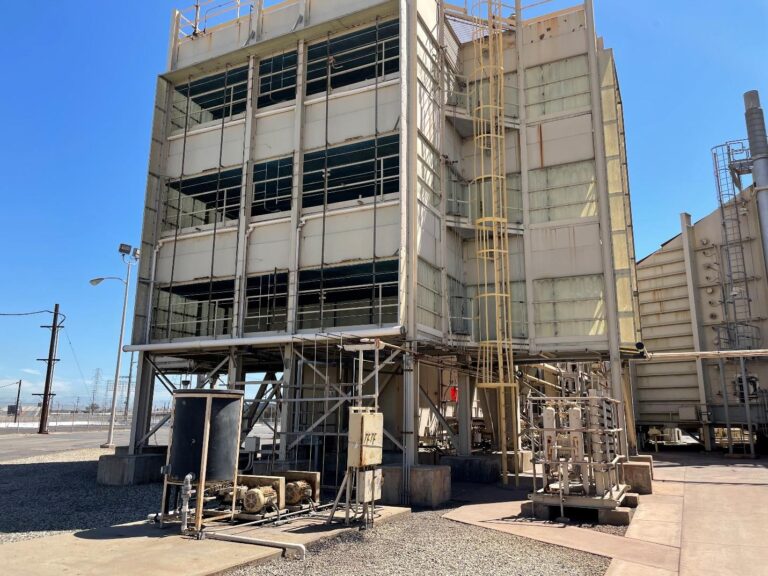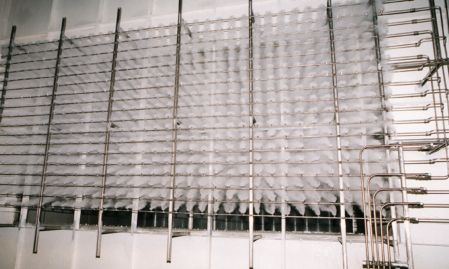Boosting Power: How MeeFog Revolutionizes Gas Turbines in Southeast Asia
BlogMeet Thomas Mee, CEO of Mee Industries Inc. See the fascinating world of advancing energy transition.

In a world increasingly focused on efficiency, sustainability, and innovation, few technologies are as quietly powerful—and widely applicable—as high-pressure fogging systems. At the forefront of this field is Thomas Mee, CEO of Mee Industries, a company renowned for turning ordinary water into a game-changing solution for cooling, humidification, and energy augmentation.
In this exclusive interview, Thomas shares how Mee Industries has revolutionized the use of fogging systems across industries—from power generation and data centers to special effects at Disneyland. With over 1,100 installations worldwide, including many in Southeast Asia, Mee Industries’ systems are proving vital in challenging climates and high-demand environments.
Join us as we dive into how this innovative technology works, its impact on gas turbine power output and fuel efficiency, and why fog—yes, fog—might just be the future of smarter energy use.
Full Transcript from Video Interview with Enlit Asia, September 9 to 11, 2025 (BITEC, Bangkok, Thailand) — Advancing a Realistic Energy Transition in ASEAN.
Thomas Mee CEO of Mee Industries Inc.
About Mee Industries, Inc.
Mee Industries is a company that specializes in atomizing water. We create fog from water by using high pressure to atomize it into very small droplets—about 10 microns on average. These tiny droplets evaporate quickly, allowing us to rapidly cool and humidify large volumes of air. The fog we produce closely resembles natural fog in appearance and behavior.
Our systems are extensively used for gas turbine (GT) power augmentation, where we cool and humidify the inlet air. Additionally, our technology is applied in humidifying large commercial buildings, cooling data centers, and even carbon capture projects. We also support cooling large air-cooled heat exchangers, such as steam condensers. Beyond industrial uses, our fogging systems have been utilized for special effects in Hollywood and at Disneyland.
Despite the wide range of applications, our core focus remains on gas turbine (GT) fogging for power augmentation. To date, we have installed more than 1,100 systems worldwide, including many in Southeast Asia—notably in countries like Malaysia and Thailand—where the technology has proven highly successful.
What are the most common challenges maximizing fuel economy/GT output in Southeast Asia?
As you know, Southeast Asia experiences very hot and humid afternoons. This environment makes traditional media-type evaporative coolers less effective compared to regions like California. However, our fogging systems perform especially well in these climates, primarily because they impose virtually no inlet air pressure drop, making them highly effective evaporative coolers.
On a typical summer day in Southeast Asia, our system can reduce the inlet air temperature by approximately 10°C, resulting in a power output boost of around 8% for a typical gas turbine, and about a 1.7% improvement in fuel efficiency. That’s a significant figure, especially considering how much fuel a gas turbine consumes annually.
How Inlet Fogging and Wet Compression increase GT output and improve fuel economy?
We also implement a technique called wet compression, which is somewhat similar to inlet evaporative cooling. With this approach, we can either evaporate the water before the air enters the compressor or inject water directly into the compressor. Inside, the water evaporates due to the heat of compression, providing an inter-cooling effect. This reduces the compression work, allowing more energy to be used for generating electricity and improving overall fuel efficiency.
For example, injecting water equivalent to 1% of the air mass flow can provide a power boost of 8 to 10%, regardless of ambient humidity levels—even if it’s 100% humidity outside. This makes the technology particularly well-suited for humid regions like Southeast Asia.
That’s all for now—I’m looking forward to visiting Southeast Asia again soon!


